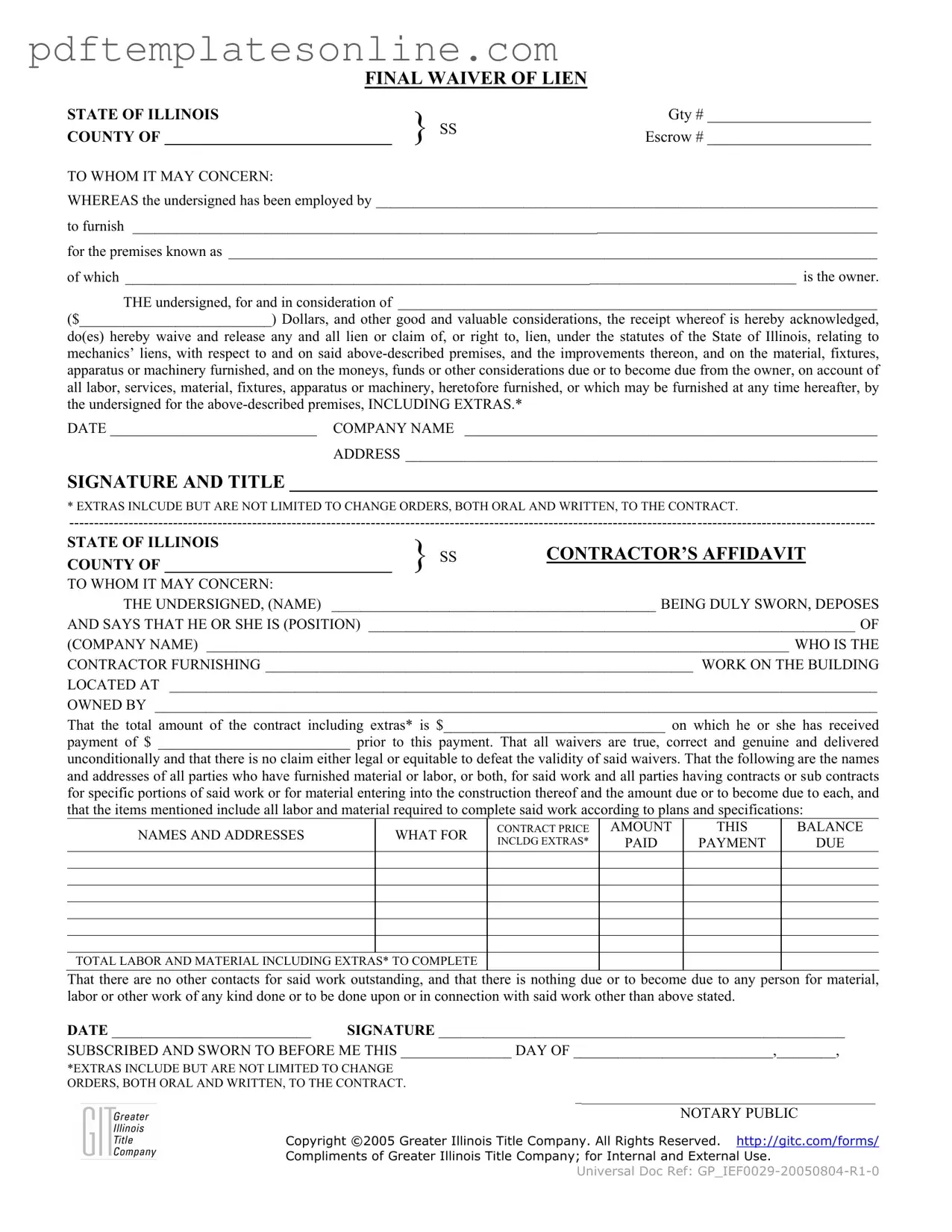Filling out the Illinois Final Waiver of Lien form can be straightforward, but mistakes can lead to serious issues. One common error is failing to include the correct contractor's name. The name should match exactly with the business name used in other documents. An incorrect name can cause confusion and may invalidate the waiver.
Another frequent mistake is neglecting to specify the amount paid. It’s essential to accurately fill in the payment amount received prior to submitting the waiver. Leaving this blank or entering the wrong figure can create legal complications and misunderstandings about payments made.
People often overlook the importance of detailing extras. The form requires a clear mention of any change orders or additional work that may have been performed. If this information is missing, it could result in disputes over what work was included in the contract.
Additionally, many individuals fail to provide a complete description of the work performed. This section should clearly outline the nature of the services or materials provided. A vague description can lead to questions about the legitimacy of the waiver.
Another mistake is not including the property owner's name correctly. The waiver must accurately reflect the owner of the property where the work was done. Errors in this area can complicate the enforcement of the lien waiver.
Some people forget to sign and date the form. This may seem simple, but without a signature and date, the waiver is not valid. It’s crucial to ensure that all required fields are completed before submission.
Moreover, individuals sometimes do not have the waiver notarized. A notary public must witness the signing of the waiver to ensure its authenticity. Skipping this step can render the document ineffective.
Lastly, failing to keep a copy of the completed waiver for personal records is a mistake many make. Retaining a copy is important for future reference and can help resolve any disputes that may arise later.
